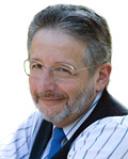Estrogen
Estrogen, Menopause, and Breast Cancer
The negative things you think you know about HRT are probably false.
Posted April 1, 2020 Reviewed by Abigail Fagan
I come to praise estrogen for most women entering, and many women already in, menopause. (I’m not here to talk about the use of estrogen in young people. That’s an entirely different matter.)
Over 2 million women enter menopause every year—some 6,000 every day. Since more women than ever are living past 50 (when menopause frequently starts), it’s important that women and their partners understand the typical symptoms and various treatment options.
These symptoms are disruptive enough—hot flashes, insomnia, heart palpitations, mood swings, reduced sex drive. Just as importantly, this is a time of life when women can protect themselves against other age-related health problems. These include dementia, heart disease, and osteoporosis, which all undermine longevity.
But isn’t estrogen dangerous? Doesn’t it cause breast cancer?
In a word, no.
That's a popular myth, and it preventing lots of people from getting the healthcare they need. So where did that idea come from? After all, the medical consensus until 2002 was that estrogen was a valuable tool in treating menopausal symptoms.
The Federal Myth Machine: The WHI
In 1991, the federal government announced ambitious plans for the largest-ever study of women’s health. The Women’s Health Initiative (WHI) was going to involve a 15-year, $600 million-dollar study—160,000 women in a multi-pronged, double-blinded study.
Unfortunately, the study was plagued by poor subject selection (mostly overweight or obese, older Caucasian women, with smokers way over-represented), high attrition, and other methodological problems. Only 4% of the women were 50 to 54 years old, the age at which women typically decide whether to initiate hormonal therapy. This was a ghastly mistake, rendering much of the study non-generalizable.
In 2002, the study was abruptly halted, as WHI reported that hormone replacement therapy (HRT: i.e., estrogen or estrogen + progestin) was dangerous, actually increasing various health risks (including breast cancer), shortening women’s life expectancy. In light of this alleged finding, WHI felt it would be unethical to continue.
The damning report made worldwide headlines. Hundreds of thousands of American women stopped taking HRT overnight, supported by well-meaning physicians who hadn’t read the actual report. Even the Journal of the American Medical Association echoed the WHI press release: “Hormone Therapy Study Stopped Due to Increased Breast Cancer Risk.”
A subsequent WHI follow-up reported the opposite findings. Several WHI investigators themselves later backed away from the study’s claims, and one, Robert Langer, revealingly wrote: “Highly unusual circumstances prevailed when the WHI trial was stopped prematurely in July 2002 … [principal investigators] were actively excluded from the writing and dissemination activities.”
Subsequent studies around the world have convincingly challenged WHI’s initial, mistaken report on estrogen’s alleged dangers.
But because “no actual problem” never gets the headlines that “HUGE problem” gets, millions of women and their doctors still believe that estrogen is bad.
Why Is This Question So Important?
HRT is the most effective treatment for all menopausal symptoms, including hot flashes, insomnia, difficulty concentrating, and decreased libido.
Beyond this, HRT actually helps prevent heart disease, stroke, osteoporosis, and Alzheimer’s—which actually afflict way more women than breast cancer. Women taking HRT live, on average, several years longer than those not taking it.
In fact, seven times as many women die of heart disease every year as die of breast cancer. Heart disease, not cancer, is the leading cause of death among breast cancer survivors.
Take estrogen despite having breast cancer? For many women, absolutely. Breast cancer is not a disease of having too much estrogen in your body. If it were, no one would get breast cancer after menopause, when the body’s production of estrogen declines by 99%.
And yet women continue to fear breast cancer more than the statistics warrant. This is part of a larger pattern of people generally fearing the wrong things, and acting accordingly.
For example, many people are afraid to fly in commercial airplanes, not realizing that the drive to the airport is far more dangerous. I recall my own elderly parents’ only flight abroad from the U.S. many years ago.
My highly anxious mother booked a flight to Israel with multiple stops so she could periodically “be safe on the ground”—ignoring the evidence that with each takeoff and landing, she increased the trip’s actual risk.
Another common thing that people worry about is their child being kidnapped by a stranger. According to the FBI, that happens to less than 1,000 American children per year—still too many but very, very rare (and almost all return safely). The most dangerous thing that most kids do is far less glamorous—texting while riding their bikes.
It would be great if every adult would take a one-hour course on statistics, so they could understand just three crucial concepts:
- The normal distribution: How traits and behaviors cluster around a mean, and how extremes of these are progressively less likely in a random sample.
- What exactly is and isn’t a random sample, and why not all samples are representative of a larger population.
- Why there will always be outliers that seem to contradict any statistic—and why they don’t constitute proof of anything.
Pathologizing Normal Life?
Treating the symptoms of menopause is not the same thing as pathologizing a normal part of life. As we get older, people wear reading glasses, use hearing aids, take Tamsulosin to reduce nighttime bathroom trips, use statins to control cholesterol, and use a C-Pap machine to reduce sleep apnea. Some people use Viagra. Many people use sexual lubricants.
And many people do Sudoku or other puzzles in the attempt to ward off dementia—even though this has been proven completely ineffective.
So it’s interesting that of all the interventions challenging age-related symptoms, there are so many more complaints about “medicalizing” menopause than other conditions—many by self-described women’s health advocates. Could it be that some people are trivializing the symptoms of menopause as just an inconvenience? Tell that to a middle-aged woman who hasn’t slept for five years.
Another interesting insight into the foibles of our decision-making comes from the industry that grew up after the estrogen-causes-breast-cancer scare. Supplements labeled “bio-identical” and “pharmacy compounded” cleverly appeal to those who want to feel that a medical product is custom-tailored for them—and who doesn’t?
However, virtually no consumer of estrogen needs it in specially compounded form. And the non-prescription “forever young” supplements of celebrity salespeople like Suzanne Sommers are worthless—except to Sommers’ financial advisors.
For more information about the usefulness and safety of estrogen in menopause, a great resource is the book Estrogen Matters: Why Taking Hormones in Menopause Can Improve Women’s Well-Being and Lengthen Their Lives—Without Raising the Risk of Breast Cancer, by oncologist Avrum Blum and psychologist Carol Tavris.
To reduce the risk of osteoporosis, dementia, and heart disease, estrogen can be a crucial intervention at the beginning of menopause. Data from around the world show that this drug does not promote breast cancer. Taking estrogen, with or without progestin, is a health activity that can increase quality of life and prolong longevity. It can make partner sex more comfortable, improve memory and concentration, and allow a person to sleep—arguably the most important part of a healthy lifestyle.
Estrogen isn’t for every woman. And it won’t make anyone young forever. But as former NIH director Bernadine Healy said many years ago, it will make women healthier, longer. Who can be against that?
If you liked this post, you may enjoy this post as well.




